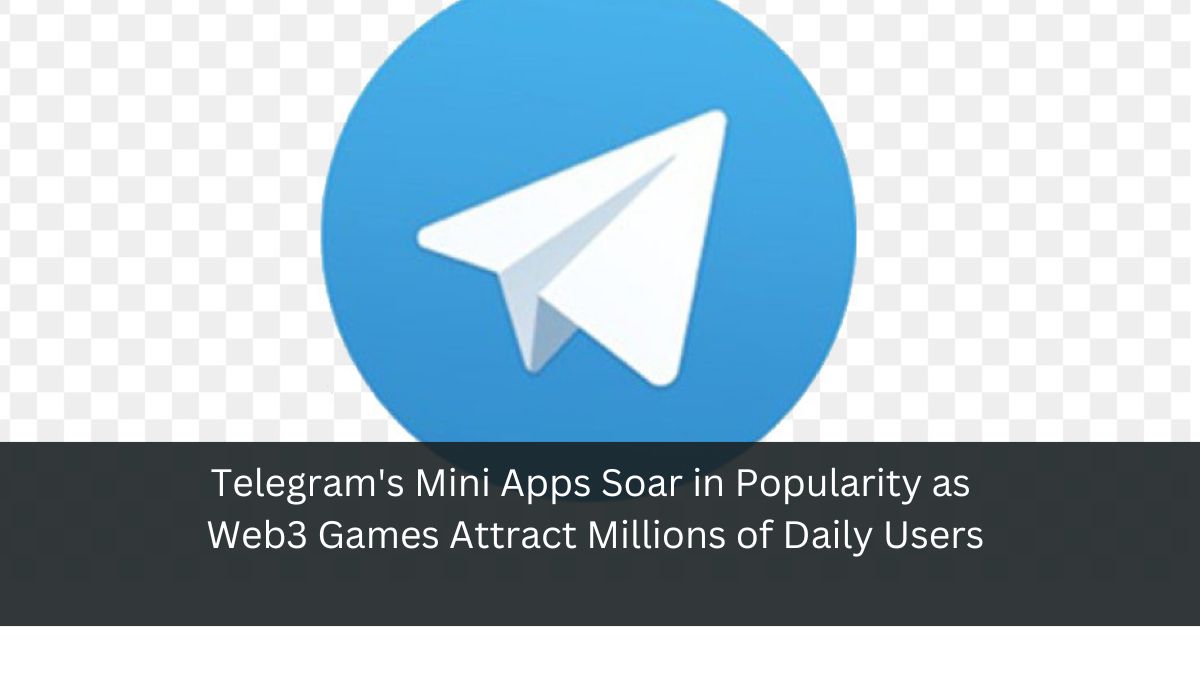Ad Tech
Telegram’s Mini Apps Soar in Popularity as Web3 Games Attract Millions of Daily Users

In the ever-evolving landscape of digital communication and entertainment, Telegram, one of the world’s most widely used messaging apps boasting 800 million monthly users, has witnessed an extraordinary surge in the popularity of its “mini apps.” These innovative applications, built and run directly within the messenger, have been drawing millions of new users every day, with web3 games leading the charge in this remarkable growth.
The Rise of Telegram Mini Apps
Telegram’s mini apps, or TMAs, offer a unique gateway to the world of web3, providing developers with a range of powerful tools and features to create engaging, interactive experiences for users. With the TON SDK, an open-source protocol that facilitates seamless communication between wallets and apps, and TON Connect, developers can easily integrate various monetization options, such as advertising, subscription models, and in-app purchases. Additionally, TMAs enable bot interaction and foster vibrant community development, making them an attractive platform for developers and users alike.
One recent example of the immense popularity and influence of the Telegram community is Notcoin (NOT), a mini app that has been the talk of the town in the primarily Russian-speaking community for several months. Last week, Notcoin was listed on several crypto exchanges, gaining international recognition and revealing that around five million tokens were claimed within the first 36 hours of trading. This remarkable achievement showcases the potential of Telegram’s mini apps to capture the attention and engagement of a vast, global audience.
Hamster Kombat: The Latest Sensation
Among the mini apps currently making waves on Telegram and TikTok is Hamster Kombat, a game that allows players to experience life as a crypto exchange CEO. By purchasing “upgrade cards,” completing quests, and inviting friends, players can increase their virtual exchange income and navigate the challenges and tasks CEOs face daily, from hiring and business development to compliance and licensing.
Since its launch on March 26, Hamster Kombat has amassed an astonishing 19 million daily active users, with almost 2.9 million new users joining just yesterday. The game’s PR manager attributes this explosive growth to the engaging plot, the referral system, and the enticing rewards. The Hamster Kombat community has been so active that the company hasn’t had to spend its marketing budget, as users themselves create content and campaigns to promote the game.
The Power of Community and Competition
The secret behind Hamster Kombat’s success may lie in the spirit of competition and rivalry that drives engagement and enthusiasm among players. The game features a leaderboard that showcases the most successful players at each level, inspiring everyone to claim the top spot. This competitive element, combined with the game’s referral system, has led to users going to great lengths to promote their referral links, such as printing QR codes and posting them on lampposts or purchasing paid advertisements to promote their Telegram channels.
The popularity of other Telegram mini apps, particularly Notcoin, has also contributed to Hamster Kombat’s success. The listing of Notcoin has demonstrated that a simple clicker game can evolve into something tradable on exchanges, paving the way for other mini apps to follow suit.
Looking Ahead: Web3 Integration and Crypto Listings
While Hamster Kombat does not currently have any web3 elements, the developers are focused on immersing players in the world of blockchain through gameplay mechanics and educating them about the crypto world through storytelling and game elements. However, web3 and crypto integration are part of the project’s roadmap, with the company currently in negotiations with major crypto exchanges about a potential listing of the game’s coin (ticker yet to be announced). Players will also be able to use this coin for the game’s mechanics, although the exact details are yet to be revealed.
Telegram’s Appeal to the Crypto Community
Telegram’s popularity as a platform for web3 games and the crypto community can be attributed to its secure communication and community-building capabilities. Crypto projects use Telegram to communicate directly with users, make announcements, discuss important news and updates, and host events, AMA sessions, and webinars. Mini apps, in particular, are an efficient tool for engaging the crypto audience, offering access to various services such as cryptocurrency wallets, crypto games, and exchanges, as well as providing transparency and security in user interactions and enabling targeted marketing campaigns.
A Bright Future for Telegram Mini Apps
The meteoric rise of Telegram’s mini apps, driven by the success of web3 games like Hamster Kombat, demonstrates the immense potential of this platform to captivate and engage millions of users worldwide. As developers continue to harness the power of Telegram’s tools and features to create innovative, engaging experiences, and as the crypto community increasingly turns to Telegram for secure communication and community building, the future of TMAs looks brighter than ever.
As the world of digital communication and entertainment continues to evolve, Telegram’s mini apps are poised to play a significant role in shaping the way we interact, play, and engage with one another online. With millions of users joining every day and new, exciting projects constantly emerging, the TMA ecosystem is a space to watch closely in the coming months and years.
